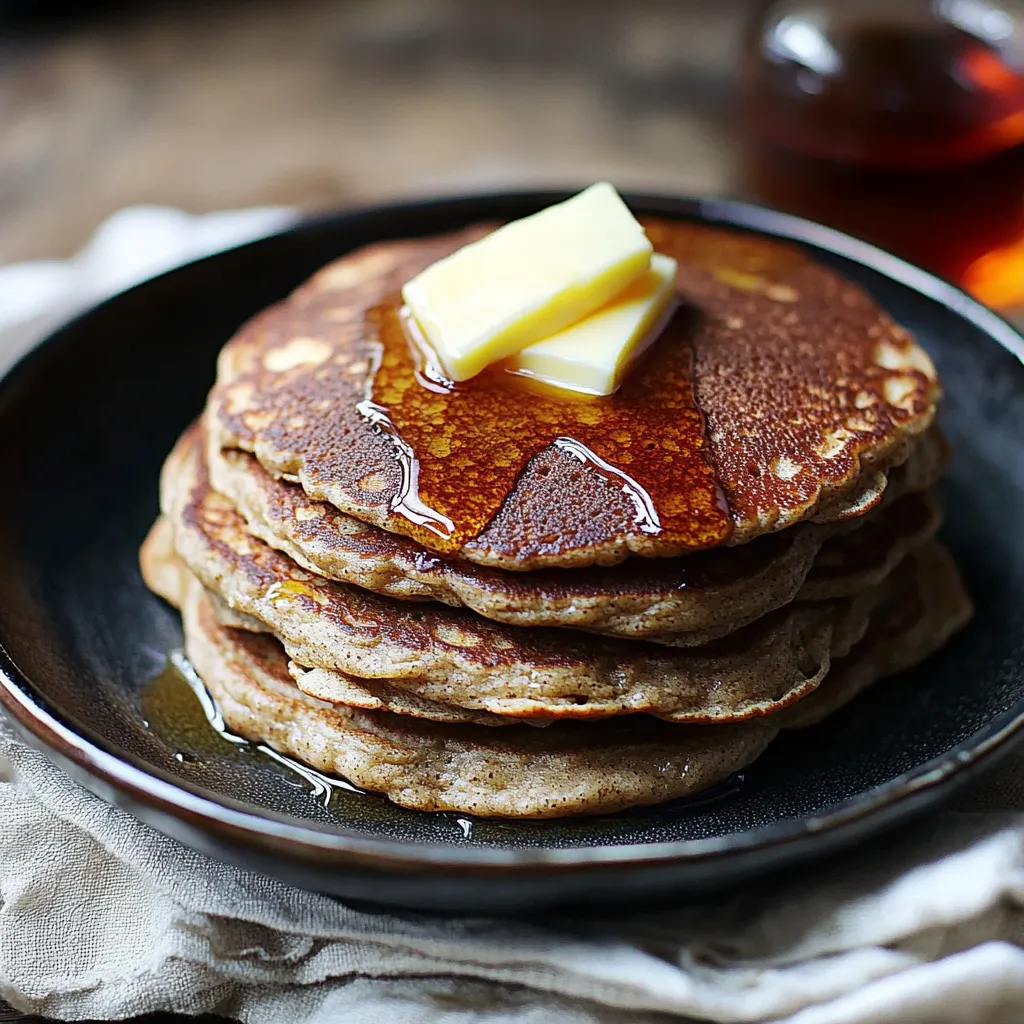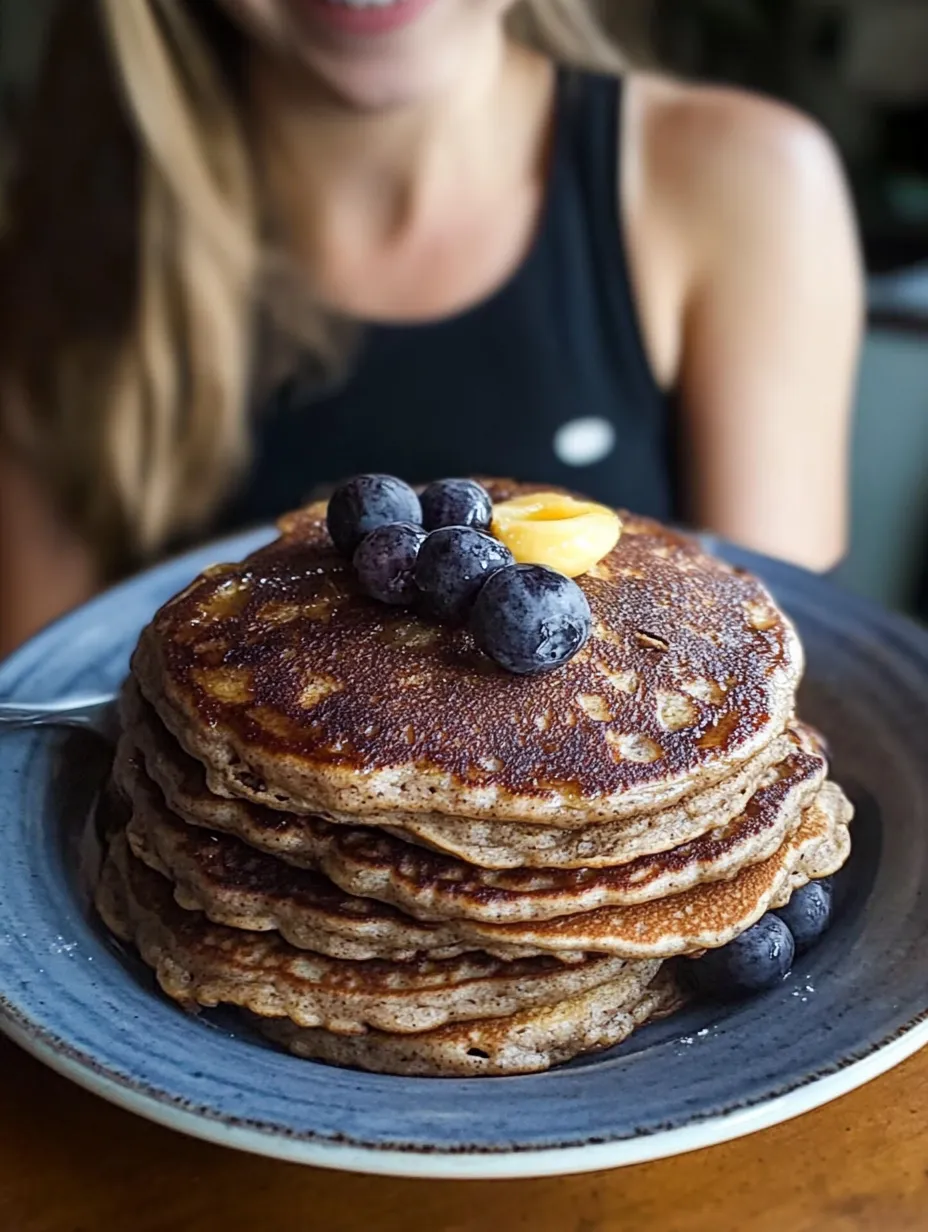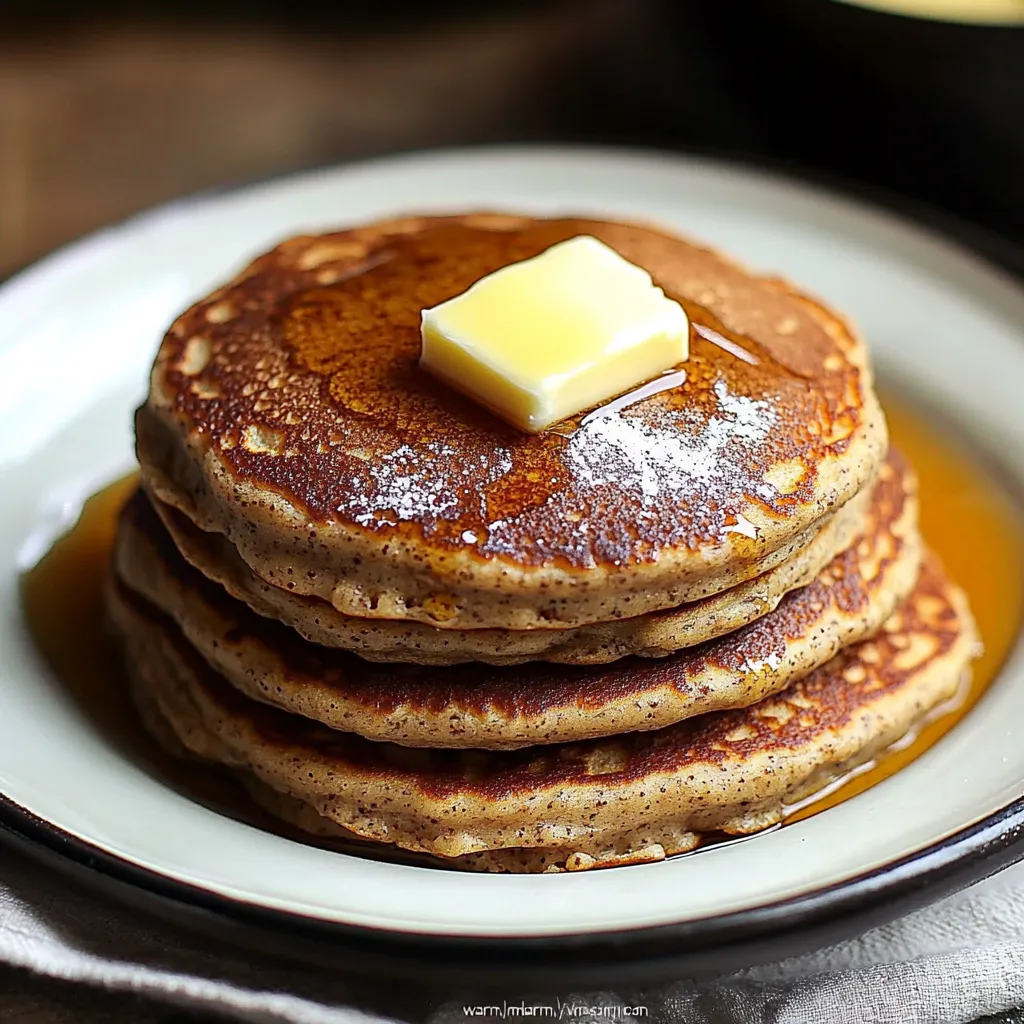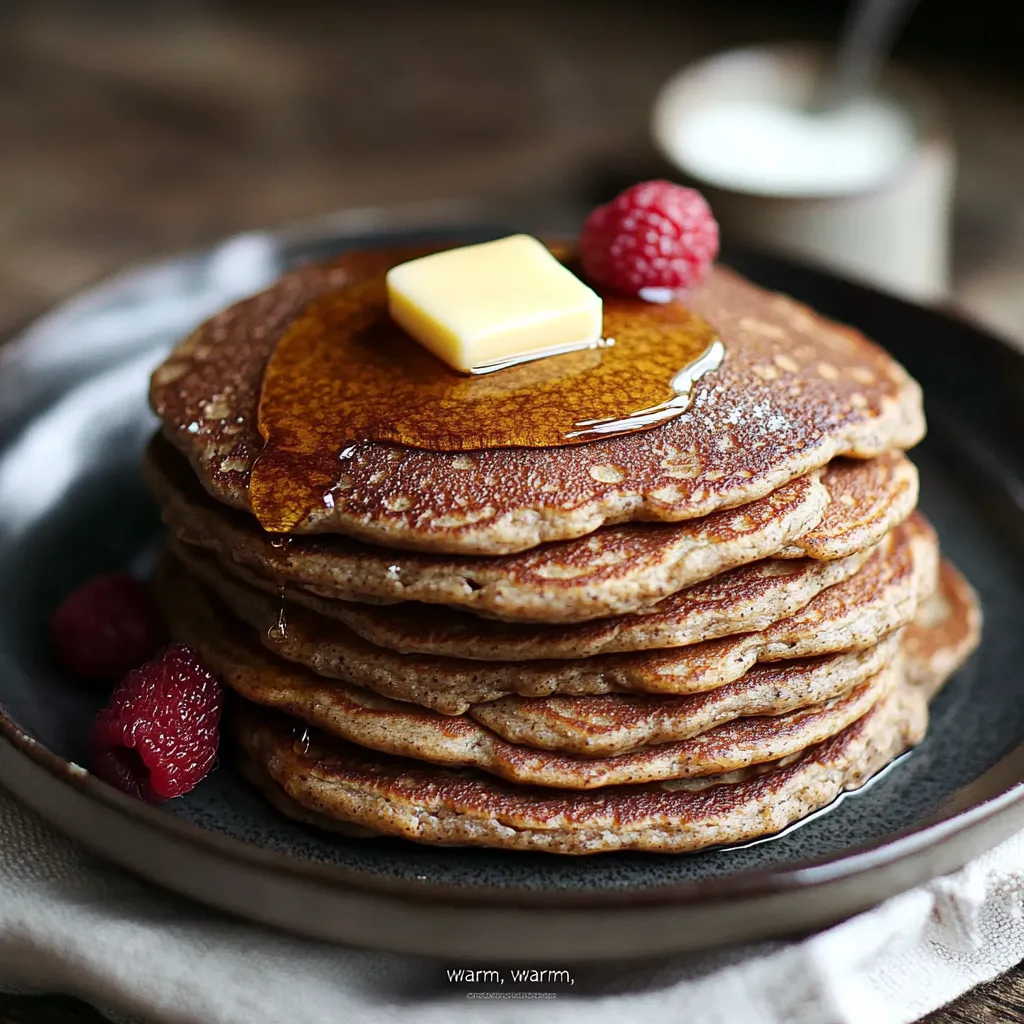 Pin it
Pin it
Buckwheat pancakes have this incredible homey feeling - that earthy, nutty taste that brings you right back to those lazy mornings when breakfast wasn't rushed. After countless weekend pancake sessions, I've found that great buckwheat pancakes aren't just about what goes in them, but knowing how to bring out the best in this old-world grain.
Just this past weekend, I whipped these up for visitors who'd never tried buckwheat before. Their doubtful looks quickly changed after one bite. What's my trick? Taking it slow and getting how everything works together.
Key Ingredients and Shopping Advice
- Buckwheat Flour: Go for something aromatic and fresh. The stone-ground stuff really gives you the most flavor.
- Buttermilk: Get full-fat and fresh; you need its tanginess for both taste and texture.
- Butter: Melt it but let it cool so it mixes into your batter without cooking the egg.
 Pin it
Pin it
Simple Pancake Making Guide
- Get your pan hot:
- Put your skillet on medium heat and give it time to warm up completely.
- Combine your dry stuff:
- Stir buckwheat and regular flours with sugar, salt, and baking soda until mixed. Make a hole in the middle to avoid overmixing later.
- Mix wet items:
- Beat your egg until it's foamy, then stir in half the buttermilk and your cooled melted butter. Pour in more buttermilk until it feels right.
- Put it all together:
- Pour your wet mix into the hole in your dry stuff. Fold it all gently just until it comes together, leaving some small lumps for softer pancakes.
- Let it sit:
- Give your batter 5 minutes to rest while your pan finishes heating up.
 Pin it
Pin it
Smart Flipping Techniques
Keep an eye on your cooking pancakes. You'll see tiny bubbles form, pop, and leave little holes behind. The edges will look a bit dry and not shiny anymore. That's when it's flip time. Use a thin, bendy spatula and flip with confidence.
Handling Heat Just Right
Watching your heat is super important the whole time you're cooking. After you've made a few pancakes, your pan might get too hot - don't worry about turning it down or even lifting it off the burner for a bit. If you notice any smoke, wipe the surface with a paper towel and let it cool down a little before you keep going.
Building Your Breakfast Tradition
At my house, weekend pancakes have turned into something we all look forward to. I've started warming the oven on its lowest setting with a wire rack inside. Each finished pancake goes right onto that rack, staying warm and crisp while I cook the rest. This works way better than stacking them, which just makes them all mushy.
Tasty Topping Ideas
- Classic: Maple syrup
- Fresh: Berries and whipped cream
- Warm: Sautéed apples with cinnamon
- Nutty: Honey and chopped nuts
Heritage Connection
Buckwheat pancakes run deep in American farming history. They became popular in places where tough buckwheat plants grew well, showing our ties to farming roots. Whenever I make these pancakes, I think about all the cooks before me who watched for those same bubbles, waiting for just the right moment to flip.
Adjusting For The Seasons
- Autumn: Throw in some cinnamon and nutmeg, then top with cooked apples and toasted pecans.
- Summer: Push fresh berries into the cooking batter.
- Winter: Mix in orange zest and pour dark honey over top.
- Spring: Add fresh mint and lemon for light flavors.
Picking The Right Tools
The pan you use really matters. A well-used cast iron skillet works wonders for pancakes. It heats evenly and gets naturally non-stick over time. If you're using a non-stick pan, go for something heavy that won't heat unevenly. Keep a skinny spatula with a flexible edge handy - it gets under pancakes much better than thick ones.
Get-Ready-Ahead Tips
- Stir together dry stuff the night before and cover it up.
- Get wet ingredients measured and keep them in the fridge.
- Make sure your pan is clean and ready to go.
- Set out plates and toppings ahead of time.
 Pin it
Pin it
Keeping And Warming Leftovers
- Let them cool fully on wire racks before putting away.
- Stack them with parchment paper between each one.
- Keep them in a sealed container in the fridge for up to three days.
- Warm them quickly in a toaster or pan.
Wrapping Up The Experience
Making truly great buckwheat pancakes means understanding how ingredients, heat, and timing work together. Through many Sunday breakfasts, I've learned these pancakes will tell you when they're ready - you just need to watch for the signs.
The wonderful thing about buckwheat pancakes isn't just how they taste but how they connect us to old cooking ways while fitting into our busy lives. Whether you're having them during a slow weekend brunch or warming them up for a quick breakfast, they remind us that food made with care feeds more than just our hunger.
Frequently Asked Questions
- → How do I make them gluten-free?
- Just swap all-purpose flour entirely for buckwheat or use a gluten-free mix.
- → Are eggs absolutely needed?
- Nope, you can omit the egg completely, and it’ll still turn out fine.
- → What’s a quick buttermilk hack?
- Combine 2 tablespoons vinegar with milk to total 2 cups, then wait 5 minutes.
- → Why don’t they turn out fluffy?
- Avoid over-stirring the mix—some lumps are okay. Check that your baking soda’s still active.
- → Can I store these in the freezer?
- For sure! Cool them first, stack with parchment in between, and freeze. Just pop in a toaster or microwave to reheat.
